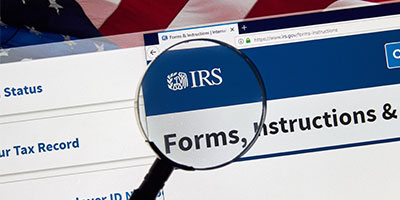
Jun 19, 2025 | Around The Home, Around The Hoome, Artificial intelligence, Buying Real Estate, Chapter 7 Bankruptcy, Consumer Tips, Credit Scoring, Fair Housing, Federal Reserve, FHFA, Financial Crisis, Financial Fraud, Financial Reports, Foreclosure, Happy Thanksgiving, Holidays, Home Building Tips, Home Buyer Tips, Home Buying Tips, Home Care, Home Care Tips, Home Closings, Home Decorating, Home Financing Tips, Home Maintenance, Home Mortgage, Home Mortgage Tips, Home Seller Tips, Home Selling Tips, Home Tips, Home Values, Homebuyer Tips, Homeowner Tips, Housing Analysis, Housing Market, Interesting Stuff, Investment Properties, Legislation, Market Outlook, Mortagage Tips, Mortgage, Mortgage Guidelines, Mortgage Lenders, Mortgage Rates, Mortgage Tips, mortgage-rates-whats-ahead-september-17-2012, News, Organization Tips, Personal Finance, Probate Law, Rankings, Real Estate, Real Estate Agent Information, Real Estate Definitions, Real Estate Tips, Real Estate Trends, Realtors, Selling Real Estate, Selling Your Home, Short Sales, Statistics, Success, Taxes, The Economy, Title Insurance
Whether you’re buying with cash, investing from abroad, transferring property to a family member, or just trying to close without a headache, you’ll want to know what can trigger federal scrutiny — and how to stay off the radar.
From flagged wire transfers and shell companies to gift-of-equity sales and land near military zones, this isn’t your average title-and-keys situation.
It’s real estate with a side of national security, tax enforcement, and financial crime prevention.
Is Big Brother Watching Your Home Sale?
What Buyers and Sellers Should Know About Federal Oversight
You’re Not Paranoid — They Might Actually Be Watching
What you didn’t know on how federal agencies keep tabs on select real estate transactions.
Your Closing Packet Could Be a Federal File
How Your Paper Trail Might Raise Red Flags — And What You Can Do About It
What the FBI, IRS, and Homeland Security
Could See in Your Closing Docs
We’re unpacking what agencies might spot inside your deal’s fine print.
Caught in the Crosshairs? What Triggers Federal Interest in Your Home Sale
The Top Red Flags That Could Invite a Closer Look from Washington
Cash, LLCs, or Land Near a Base? You Might Just Be a Target
The warning signs that put your deal on the government’s radar — and how to stay clear.
Follow the Money: How the IRS Tracks Financial Crimes Through Real Estate
From Unreported Income to Shell Game Schemes
— What IRS-CI Is Looking For
Your Closing Could Be an Audit Trigger — Here’s How the IRS Sees It
Explore the patterns, documents, and loopholes that turn ordinary deals into criminal cases.
Providing title, escrow, closing and settlement services to clients throughout Massachusetts and New Hampshire
“As a realtor, the Rocheford team went above and beyond to make sure my client was not only protected from a legal standpoint but also operated in a timely manner to execute the sale of my client’s dream home.
Thank you for the great experience for myself and my client! Looking forward to our next deal together!”
Realtor®
“I don’t usually use attorneys that often. But if an attorney is needed, I couldn’t recommend this law office enough. I always pride myself on responding quickly to emails and calls, but I was in awe of how fast paralegal Robert Heckman would respond to us. We sold our house a couple months ago and then did a two-part land swap with neighbors and my folks, and both transactions were seamless, including coming in to sign paperwork.
In short, if you need a law office that is responsive and attentive to detail, definitely consider them!”
Leominster, MA
“Excellent, conscientious and professional.
The communication throughout our Real Estate transaction was better than expected. We thought the fee to be very reasonable considering the work accomplished on our behalf. The law office handled the entire closing without us having to be in attendance….as we requested. I have had experience with very competent lawyers and law firms as the result of my previous profession. I would place this law office right up there among the best in their real estate field of expertise and surprisingly at very reasonable and affordable rates/fees.”
Buzzards Bay, MA
Aug 27, 2013 | FHFA
 The National Association of REALTORS reported that existing home sales for July came in at 5.39 million on a seasonally adjusted annual basis. July’s reading exceeded both expectations of 5.21 million existing homes sold and June’s reading of 5.06 million homes sold.
The National Association of REALTORS reported that existing home sales for July came in at 5.39 million on a seasonally adjusted annual basis. July’s reading exceeded both expectations of 5.21 million existing homes sold and June’s reading of 5.06 million homes sold.
This suggests good news for home buyers who’ve been constrained by limited supplies of homes for sale.
As home prices continue increasing in many areas, more homeowners are likely to list their homes for sale. Existing home sales for July rose by 6.80 percent year-over-year.
The Federal Housing Finance Agency Home Price Index reported a 7.70 percent year overyear increase in prices for homes financed by Fannie Mae or Freddie Mac.
This reading was slightly higher than May’s year-over-year reading of a 7.60 percent increase in home prices.
New Home Sale Inventories Also Growing
New home sales for July dropped by 13.40 percent to a seasonally adjusted annual reading of 394,000; this was lower than expectations of 485,000 new homes sold, but this expectation was based on June’s original reading of 497,000 new homes sold. June’s reading has been adjusted to 455,000 homes sold, which likely would have resulted in a lower expectation.
New home sales were lower in all four U.S. regions:
-16.1 percent in the West
-13.4 percent in the South
-12.9 percent in the Midwest
– 5.7 percent in the Northeast
While this isn’t great news for developers and home builders, supplies of new homes for sale jumped from a 4.30 month supply of new homes in June to a 5.20 month inventory of available new homes in July. This was the highest inventory of available new homes since January 2012.
Monthly New Home Sales Continue Upward Trend
Month to-month sales of new homes tend to be volatile, but July’s year-over-year home sales were 6.80 percent above new home sales in July 2012.
Higher mortgage rates likely stifled sales, but slower sales would increase inventories of available homes. More homes available would help ease constraints on buyers and level then playing field for home buyers who have been competing for few homes in strong seller’s markets.
Rising mortgage rates could continue, especially if the Federal Reserve begins tapering its $85 billion in monthly bond purchases, a program known as quantitative easing. The Fed has announced that it may start reducing the QE program before year-end.
When QE purchases are reduced, securities prices can be expected to fall due to less demand, and mortgage rates can be expected to rise.
Jul 24, 2013 | FHFA

According to the National Association of REALTORS®, national sales of existing homes in June came in at 5.08 million.
June’s reading was reported to be the second highest since November of 2009; this should calm concerns about a lapsing recovery in housing markets.
Summer typically produces the highest prices for existing homes sold, as families seeking larger homes frequently move during summer months.
The June inventory of existing homes improved by 1.90 percent to 2.19 million homes or a 5.20 month supply. June’s number of available homes was 7.60 percent lower than in June 2012.
The shortage of available homes has been causing buyers to turn from existing homes to new homes in areas where both available homes and/or land for new construction are in short supply.
Average Home Prices Continue Their Climb Nationally
So the news of more existing homes for sale is good news for home buyers and housing markets that have been held back by an excess of buyers seeking a short supply of available homes.
NAR chief economist Lawrence Yun noted that inventories of existing homes are expected to “broadly favor sellers and contribute to above-normal price growth.”
This trend was supported by June’s national average price for existing homes at $214,200, which represented a year-over-year increase of 13.5 percent. Rising home prices and mortgage rates continue creating financial challenges for first-time buyers and others seeking affordable home prices and mortgage loans.
Distressed home sales were down from 18 percent in May to 15 percent in June; this is the lowest market share since tracking began in 2008. June sales of distressed homes were significantly lower than in June 2012’s reading of 26 percent of existing homes sold.
The National Association of REALTORS® noted that falling levels of distressed sales are contributing to higher prices for existing homes.
FHFA Reports Home Prices Rise In May
The Federal Housing Finance Agency (FHFA) reported Tuesday that prices for homes financed by Fannie Mae and Freddie Mac rose by 0.70 percent in May as compared to April’s downwardly revised 0.50 percent increase in home prices.
According to the FHFA Housing Price Index (HMI), home prices were up by 7.30 percent year-over-year in May, and are roughly equal to home prices reported for January 2005. May’s home prices remained 11.20 percent below peak prices reported in April 2007.
May’s FHFA data demonstrated steady growth of home prices for all nine census divisions on a year-over-year basis with home prices increasing from 2.70 percent to 15.80 percent in May.













 The National Association of REALTORS reported that existing home sales for July came in at 5.39 million on a seasonally adjusted annual basis. July’s reading exceeded both expectations of 5.21 million existing homes sold and June’s reading of 5.06 million homes sold.
The National Association of REALTORS reported that existing home sales for July came in at 5.39 million on a seasonally adjusted annual basis. July’s reading exceeded both expectations of 5.21 million existing homes sold and June’s reading of 5.06 million homes sold.